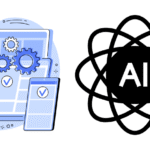
Are you looking to develop a mobile app that can run on multiple platforms without breaking the bank? Cross-platform app development may be the solution you need.
By building an app once and deploying it across various platforms, businesses can save time and money while reaching a wider audience.
Save Money with Cross-Platform App Development: Transforming your budget constraints into innovation opportunities. Dive into the economics of smarter, resourceful coding solutions.
What is Cross-Platform App Development?
Cross-platform app development refers to the process of creating mobile applications that can run on multiple operating systems. Instead of building separate native apps for each platform, developers use frameworks and tools that enable them to write code once and deploy it across different platforms. This approach allows businesses to reach a wider audience and save time and money on app development.
The main advantage of cross-platform app development is that it reduces the need for separate development teams and eliminates the need to build and maintain multiple code bases. Instead, developers can use a single code base and deploy the app across multiple platforms, including iOS, Android, and others. Cross-platform apps can be created using a variety of frameworks, including React Native, Xamarin, and Flutter.
Advantages of Cross-Platform App Development
Cross-platform app development has numerous advantages over native app development, including:
| Advantages | Benefits |
|---|---|
| Cost savings | Building a single app for multiple platforms reduces development costs, eliminates the need for separate development teams, and saves on maintenance and updates. |
| Faster time to market | Developers can write code once and deploy it across multiple platforms, reducing the overall development time. |
| Wider reach | Deploying an app on multiple platforms increases the potential user base and allows businesses to target both iOS and Android users. |
| Single codebase | Maintaining a single codebase allows for easier updates and reduces errors. |
Overall, cross-platform app development is a cost-effective and efficient way for businesses to develop and deploy mobile applications for a wider audience.
Cost Savings with Cross-Platform App Development
Cross-platform app development offers significant cost savings compared to native app development. Building a single app that can run on multiple platforms results in reduced development costs, eliminating the need for separate development teams for each platform. This also saves on maintenance and updates, as changes can be made to the app’s codebase once and deployed across all platforms.
Businesses can expect to save between 30-50% on their app development costs when using cross-platform app development. According to a study by Forrester Consulting, companies that used cross-platform app development frameworks like React Native and Xamarin saved an average of 33% compared to traditional native app development.
Time Savings with Cross-Platform App Development
Cross-platform app development offers significant time-saving benefits for businesses looking to develop apps for multiple platforms. By using a single codebase, developers can write code once and deploy it across all platforms, reducing the overall development time.
Additionally, pre-built components and plugins can be used to speed up the development process. These components can be easily integrated into the app and customized to fit the specific requirements of each platform, further reducing the development time.
Moreover, cross-platform development eliminates the need for separate development teams for each platform, saving time on coordination and communication. Instead, a single team of developers can work on the app, streamlining the development process and reducing the time required to bring the app to market.
Overall, the time-saving benefits of cross-platform app development can help businesses get their app to market faster, giving them a competitive advantage in the ever-changing app development landscape.
Reaching a Wider Audience
Cross-platform app development offers the advantage of reaching a wider audience by enabling the deployment of an app on multiple platforms. With an increasing number of users using both iOS and Android devices, this approach ensures that businesses can target both audiences effectively.
By developing an app that works seamlessly on different devices and operating systems, businesses can cater to a larger customer base, thus, maximizing the reach of their product or service. Moreover, cross-platform development also offers the potential for future expansion to other platforms, such as Windows or macOS, without having to build a separate app.
However, it’s important to keep in mind that while cross-platform app development can be a powerful tool for reaching a wider audience, the app’s design, functionality, and user experience should be optimized for each platform to ensure it meets the expectations of the target audience.
The Importance of User Feedback
To maximize the reach of the app, it’s also crucial to gather user feedback and continuously improve the app. User feedback can provide valuable insights into how the app is being used and what features users find most useful, enabling businesses to tailor the app to the needs of their audience. By addressing user feedback and incorporating it into the app’s future development, businesses can ensure their app remains relevant and useful to their target audience.
In summary, cross-platform app development offers businesses the opportunity to reach a wider audience, while also providing the potential for future expansion. However, as with any app development approach, it’s important to optimize the app’s design, functionality, and user experience for each platform and to gather user feedback to continuously improve the app.
Overcoming Challenges in Cross-Platform App Development

While cross-platform app development offers many advantages, it also presents unique challenges that developers must overcome. Understanding these challenges is crucial to achieving a successful app.
Platform-Specific Limitations
One of the primary challenges of cross-platform app development is navigating the limitations of each platform. Different operating systems and devices may have varying capabilities and restrictions, which can impact app functionality and design. Developers must consider these limitations and adapt their code accordingly to ensure a seamless user experience across all platforms.
Performance Considerations
Cross-platform apps may also face performance issues, particularly when it comes to speed and responsiveness. Native apps are often faster because they are optimized for a specific platform, whereas cross-platform apps must be built to run on multiple platforms. Developers must use best practices and optimization techniques to ensure their apps perform well across all platforms.
Extensive Testing
Another challenge is testing the app across different devices and operating systems. Cross-platform apps must be thoroughly tested to ensure they work properly on every platform, which can be time-consuming and resource-intensive. Developers should create test plans that cover all possible scenarios and use automated testing tools to streamline the process.
“Developers must use best practices and optimization techniques to ensure their apps perform well across all platforms.”
Choosing the Right Framework
Selecting the right cross-platform framework is critical to the success of the app. Some frameworks are better suited for certain types of apps and industries, while others may not offer the necessary features or performance. Developers must carefully evaluate their options and choose a framework that meets their specific needs.
Leveraging Experienced Developers
Finally, cross-platform app development requires a team of experienced developers who understand the nuances of building for different platforms. Hiring the right talent can be a challenge, but it’s essential to ensure the app meets the necessary quality standards and functions as intended on all platforms.
Factors to Consider Before Choosing Cross-Platform App Development
While cross-platform app development offers various benefits, it is not always the best option for every business. Before diving into cross-platform app development, consider the following factors:
- Complexity of the app: Cross-platform app development may not be the best option for highly complex apps that require extensive customization for each platform.
- Target audience: Consider the demographics of the target audience. If the app is primarily targeting iOS users, it may be more beneficial to develop a native iOS app.
- Need for native functionality: If the app requires advanced native functionality that is not available in cross-platform development frameworks, it may be better to develop a native app.
- Availability of skilled developers: Cross-platform development requires developers with specific skills and experience. Consider the availability of skilled developers before choosing this option.
Before making a decision, it is essential to evaluate the performance and user experience of cross-platform apps. While cross-platform apps can save money and time, sacrificing performance or user experience can harm the overall success of the app.
Best Practices for Cross-Platform App Development
Cross-platform app development can be a complex process, but following best practices can help ensure success.
1. Plan and Design Thoroughly
Take the time to plan out the app’s features and functionality before beginning development. Consider the user experience and design the app with the target audience in mind.
2. Optimize for Each Platform
While it’s important to maintain a single codebase, it’s also crucial to optimize the app’s performance and design for each platform. Pay close attention to platform-specific guidelines and features to ensure the best possible user experience.
3. Utilize Platform-Specific Features
Each platform has its own unique features and capabilities, and leveraging these can make the app more engaging and effective. Take advantage of platform-specific features like push notifications, geolocation, and camera functionality to enhance the user experience.
4. Conduct Thorough Testing
Testing is essential for ensuring that the app runs smoothly on every platform and device. Conduct automated and manual testing to ensure that the app meets performance, functionality, and user experience objectives before launching.
5. Continuous Improvement through User Feedback
Finally, encourage user feedback and use it to make improvements to the app. Monitor user reviews and take note of any issues or suggestions for improvement. Regularly analyze app performance data to identify areas for improvement and prioritize updates accordingly.
Case Studies: Companies That Saved Money with Cross-Platform App Development
Many companies have successfully utilized cross-platform app development to save money and streamline their app development process. Here are some examples:
| Company | Industry | App | Savings |
|---|---|---|---|
| Walmart | Retail | Walmart App | $50 million |
| Groupon | E-commerce | Groupon Merchant App | 50% reduction in development costs |
| Social Media | LinkedIn Mobile | 20% reduction in development time |
Walmart‘s decision to switch to cross-platform development resulted in substantial cost savings. By combining their iOS and Android apps into a single cross-platform app, they were able to save $50 million in development costs and improve their app’s performance.
Groupon also realized significant savings by utilizing cross-platform development for their merchant app, resulting in a 50% reduction in development costs. LinkedIn also saw benefits, as their cross-platform mobile app reduced development time by 20%.
These companies are just a few examples of how cross-platform app development can provide cost and time savings, making it an increasingly popular choice for businesses looking to develop mobile apps.
Future Trends in Cross-Platform App Development
Cross-platform app development has been gaining traction in recent years, with more and more businesses realizing the benefits of building apps for multiple platforms using a single codebase. As technology continues to evolve, the future looks bright for cross-platform app development, with exciting new trends and advancements on the horizon.
New Technologies
One of the biggest trends in cross-platform app development is the emergence of new technologies that make it easier and more efficient to create high-quality apps. For example, machine learning and artificial intelligence are being integrated into app development frameworks, enabling developers to create smarter, more personalized apps that deliver better user experiences.
Improved Frameworks
The frameworks used for cross-platform app development are also evolving, with new features and capabilities that make it easier to build apps that look and feel native on each platform. For example, Google’s Flutter framework has gained popularity due to its ability to create highly performant and customizable apps with a single codebase.
Greater Cost and Time Savings
As cross-platform app development becomes more widespread, developers are finding ways to streamline the development process, resulting in even greater cost and time savings for businesses. This includes the use of reusable code libraries, automated testing, and improved deployment tools that make it faster and more efficient to get apps onto multiple platforms.
More Focus on User Experience
As businesses compete for users’ attention, the importance of delivering a high-quality user experience has never been greater. This means that cross-platform app development will continue to prioritize usability and user-centered design, with a focus on creating apps that are easy to navigate and provide value to the user.
The Rise of Progressive Web Apps
Progressive web apps (PWAs) are web-based applications that offer a native app-like experience and can be accessed through a web browser. As the technology behind PWAs continues to improve, businesses may start to explore this option as an alternative to traditional cross-platform app development, potentially offering even greater cost and time savings.
Overall, the future of cross-platform app development looks bright, with new technologies and advancements that will continue to make it easier and more cost-effective to build high-quality apps for multiple platforms.
FAQs – Save Money with Cross-Platform App Development

Businesses considering cross-platform app development may have some common questions regarding the process. Here are some frequently asked questions:
Can cross-platform apps work with existing native apps?
Yes, cross-platform apps can work with existing native apps. Developers can integrate cross-platform apps with native apps through APIs, allowing for seamless functionality between the two.
How does performance of cross-platform apps compare to native apps?
Cross-platform apps may have slightly lower performance than native apps due to the additional layers of abstraction required. However, with advancements in technology and optimization techniques, the performance gap is diminishing and becoming less noticeable.
Are cross-platform apps scalable?
Yes, cross-platform apps are scalable. Developers can add new features and functionality as the app grows, and the ability to maintain a single codebase makes updates and maintenance easier and more efficient.
What are the limitations of cross-platform app development?
Cross-platform app development can have platform-specific limitations, and not all native functionality may be available on all platforms. Additionally, extensive testing may be required to ensure the app runs smoothly on different devices and operating systems.
Can cross-platform apps access native features of different platforms?
Yes, cross-platform apps can access native features of different platforms through plugins or APIs. This allows developers to take advantage of platform-specific functionalities to enhance the app’s performance and user experience.
William is a highly accomplished technical author specializing in cross-platform app development. With a rich background in the tech industry, he has worked at prestigious companies like Uber and Facebook, where he honed his skills as an iOS developer since 2009. Throughout his career, William has been an advocate for leveraging frameworks like React Native and Xamarin to create innovative and efficient cross-platform mobile apps.
Having pursued a degree in Computer Science and Mathematics at Caltech, William is equipped with a strong educational foundation. Currently residing in LA with his two daughters, he finds solace in exploring the scenic hills through hiking. Passionate about knowledge sharing, William not only builds cutting-edge applications but also takes pleasure in teaching students how to develop their own cross-platform mobile apps. His expertise, combined with his dedication to empowering others, makes him an invaluable asset in the field of app development.







